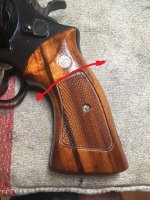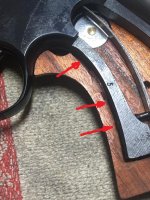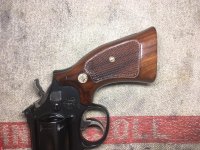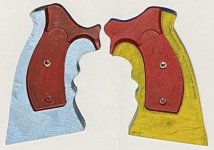Siegfired
Member
Hello to the experts!
As putting rubber grips on my S&W revolvers is no option, I always have the challenge to get the original wooden grips fastened free of clearance without risking a damage to the thread, the wood or the screw.
Especially with .357 and above they always shake loose after two handful of rounds. I tried filling the gaps between the frame and carved pockets with hotmelt, thin veneer, paper, metal foil etc. but nothing worked satisfying.
Do you have some proven strategy to fix that issue?
Thank you in advance for your support.
As putting rubber grips on my S&W revolvers is no option, I always have the challenge to get the original wooden grips fastened free of clearance without risking a damage to the thread, the wood or the screw.
Especially with .357 and above they always shake loose after two handful of rounds. I tried filling the gaps between the frame and carved pockets with hotmelt, thin veneer, paper, metal foil etc. but nothing worked satisfying.
Do you have some proven strategy to fix that issue?
Thank you in advance for your support.





